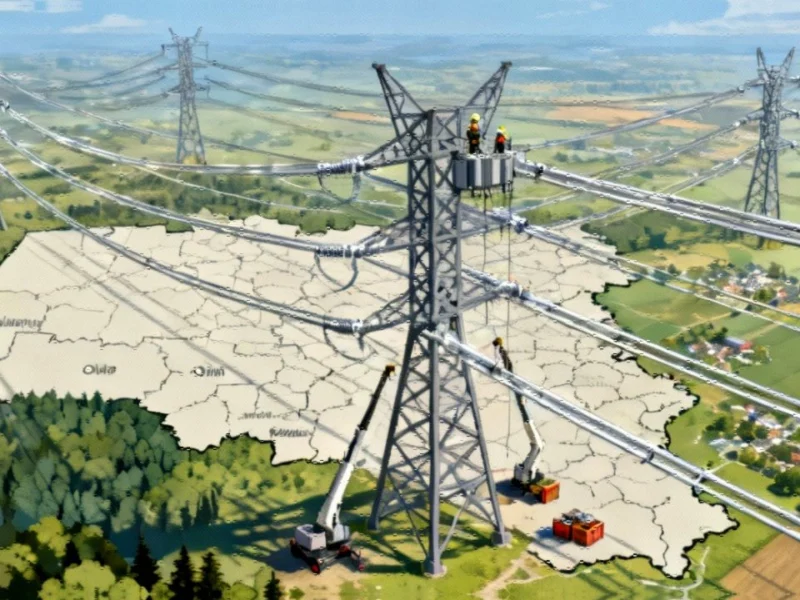Ambitious National Strategy Targets 400,000 New Green Jobs
The UK government has unveiled a comprehensive national green energy plan that aims to create 400,000 skilled jobs over the next five years, with Energy Secretary Ed Miliband announcing a particular focus on retraining workers from fossil fuel industries, school leavers, unemployed individuals, veterans, and ex-offenders. The initiative represents one of the most significant workforce transitions in recent British history, targeting a doubling of green industry employment by 2030.
Miliband emphasized that the plan directly addresses concerns about where future quality employment would originate, stating it would “answer a key question about where the good jobs of the future will come from.” The announcement has received strong support from major trade unions including Unite and GMB, who have long advocated for detailed transition pathways from carbon-intensive to clean energy employment.
Priority Professions and Training Infrastructure
Thirty-one professions have been designated as recruitment and training priorities, with plumbing, heating, and ventilation installers topping the list with an estimated need for 8,000-10,000 additional workers by 2030. These roles are followed closely by carpenters, electricians, and welders, each requiring 4,000-8,500 new trained professionals. The government’s strategy includes creating five new technical excellence colleges and investing £2.5 million in skills pilots across Cheshire, Lincolnshire, and Pembrokeshire to establish new training centers, courses, and career advisory services.
The plan also incorporates measures requiring companies receiving public grants and contracts to generate quality employment across the clean energy sector. This approach aligns with broader industry developments in workforce development and technical training methodologies that are transforming multiple sectors.
Economic and Geographic Distribution Benefits
Government analysis reveals that positions in wind, nuclear, and electricity networks typically advertise average salaries exceeding £50,000—significantly above the UK average of £37,000. These opportunities are strategically distributed across coastal regions and post-industrial communities, potentially addressing regional economic disparities. The focus on these areas represents a deliberate effort to channel investment into regions that have historically experienced economic challenges.
This geographic targeting complements other related innovations in regional economic development strategies that leverage specialized technical capabilities emerging in various industrial sectors.
Political Context and Opposition
The energy secretary positioned the plan in direct contrast to Reform UK’s stance on net zero transition, accusing the party of “waging war on jobs” by challenging clean energy adoption. Miliband asserted that “Reformers said they’ll wage war on clean energy. Well, that’s waging war on these jobs,” framing the debate as a choice between forward-looking job creation and ideological opposition to environmental progress.
This political dimension reflects broader market trends where technological advancement and environmental policy increasingly intersect with employment strategies and economic planning.
Specialized Programs for Targeted Demographics
The strategy includes tailored initiatives for specific groups, including a dedicated program matching military veterans with careers in solar panel installation, wind turbine manufacturing, and nuclear power stations. Additional customized schemes target ex-offenders, school leavers, and the unemployed, with government research indicating that 13,700 currently unemployed individuals already possess many skills required for key clean energy roles.
Existing oil and gas workers will benefit from up to £20 million in combined funding from the UK and Scottish governments for bespoke career transition training. This retraining initiative represents one of several recent technology sector workforce transformations that are redefining skill requirements across multiple industries.
Union Support and Worker protections
The plan promotes enhanced trade union recognition and collective bargaining rights within the clean energy sector, including for offshore positions. Unite General Secretary Sharon Graham welcomed the commitment, stating “Well paid, secure work must be at the heart of any green transition. Unite members will welcome the commitment to 400,000 green jobs with strong collective bargaining rights.”
GMB National Officer Charlotte Brumpton-Childs similarly endorsed the approach, noting that “GMB has long campaigned for a jobs-first transition. The government is listening and having a jobs plan to underpin the industrial strategy is exactly what this country needs.” These worker protection measures coincide with other industry developments in labor relations and technological workforce integration.
Implementation Framework and Industry Signaling
Beyond direct job creation, Miliband emphasized the plan’s role in signaling opportunity areas to regional mayors and educational institutions, enabling targeted alignment of further education programs with emerging employment needs. The strategy also provides clarity to industry stakeholders who have sought guidance on future skill requirements and recruitment pathways.
This comprehensive approach to workforce development reflects the type of strategic coordination highlighted in the UK Government’s national green energy jobs initiative, which outlines the interconnected policies supporting this employment transition. The successful implementation of this ambitious plan could establish a global benchmark for just transition frameworks that balance environmental imperatives with quality job creation and worker protections.
This article aggregates information from publicly available sources. All trademarks and copyrights belong to their respective owners.
Note: Featured image is for illustrative purposes only and does not represent any specific product, service, or entity mentioned in this article.



